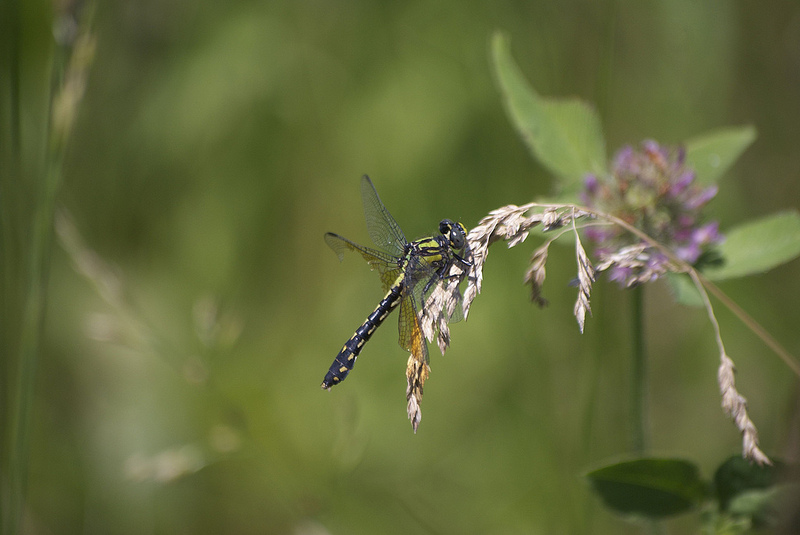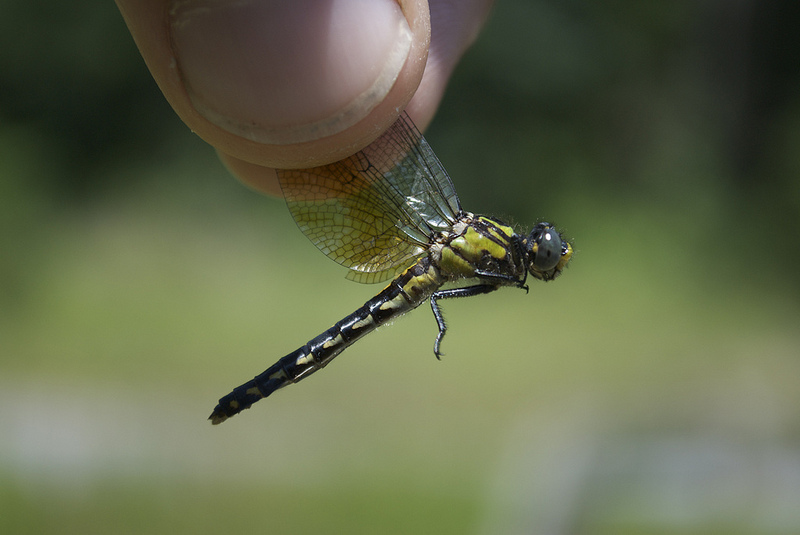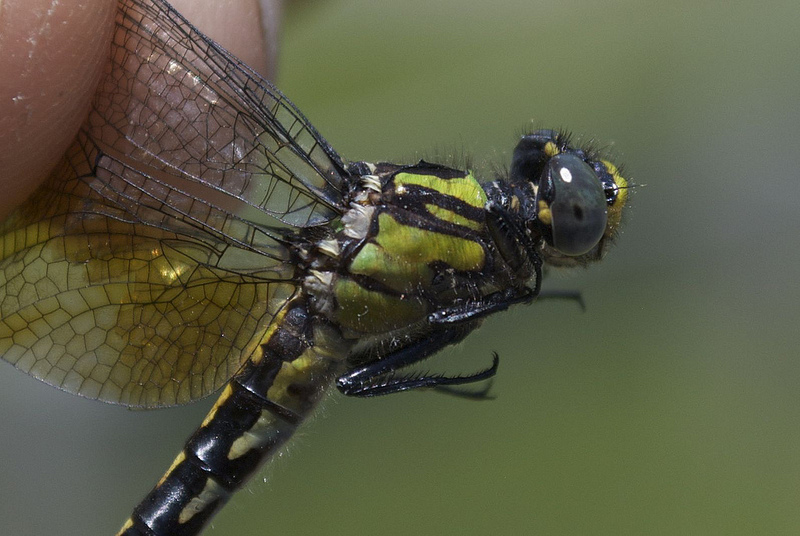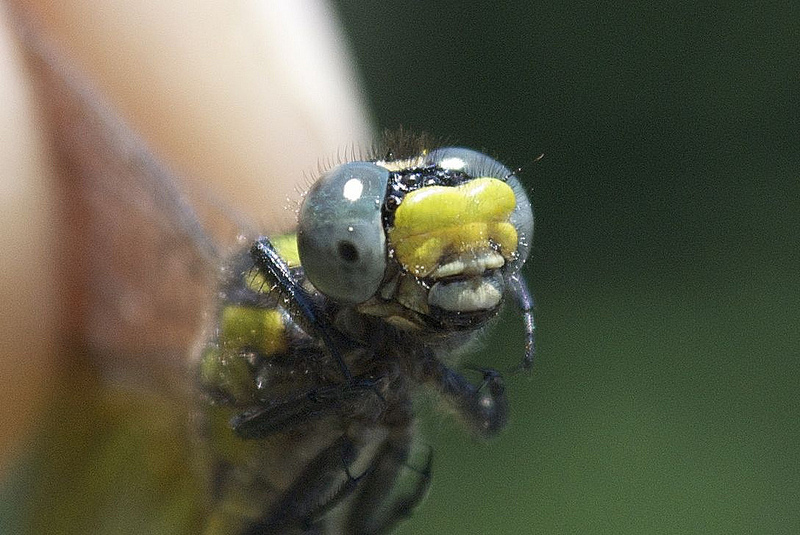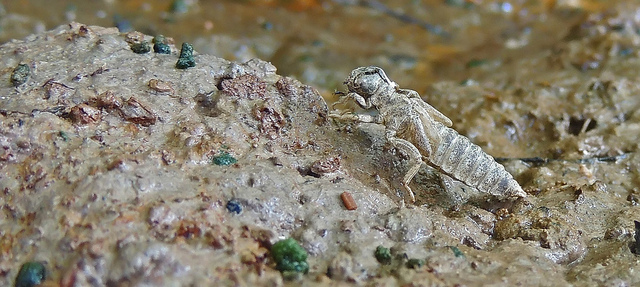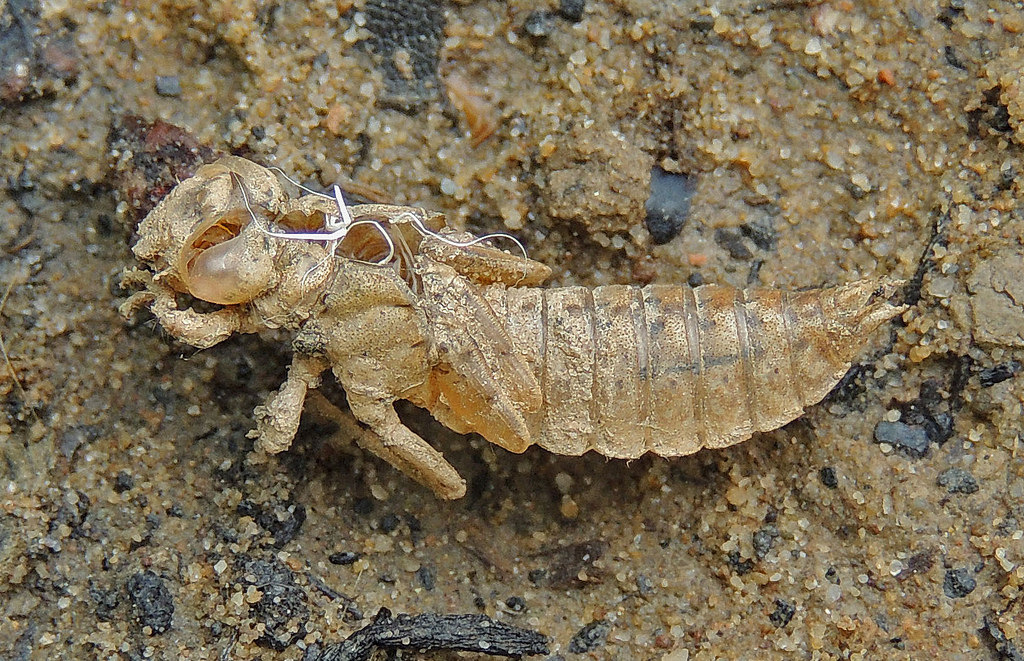Map Snapshot



8 Records
Status
Pygmy Snaketail (Ophiogomphus howei) is a very small clubtail, similar in length to Eastern Least Clubtail and the pygmy clubtails (Lanthus sp.), but rather stockier in build. This beautiful snaketail shows a green thorax like other Ophiogomphus, but also has amber-tinted basal wing patches on the hind wings, which are very distinctive. It has a marked preference for high quality, rocky creeks and rivers with riffles and sections of mud substrate. This species makes short strafes over the breeding habitat for patrolling or ovipositing, but appears to spend most of its time away from the water, making it a frustrating species to observe or document (Paulson, 2011). In Maryland, Pygmy Snaketail was only recently confirmed to occur. It is known from Washington and Allegany Counties, from larger creeks, and several exuviae from the Potomac River itself (Richard Orr's The Dragonflies and Damselflies of Maryland and the District of Columbia). It is ranked as S1 (highly state rare).
Seasonality Snapshot
Source: Wikipedia
| Ophiogomphus howei | |
|---|---|
| Scientific classification | |
| Domain: | Eukaryota |
| Kingdom: | Animalia |
| Phylum: | Arthropoda |
| Class: | Insecta |
| Order: | Odonata |
| Infraorder: | Anisoptera |
| Family: | Gomphidae |
| Genus: | Ophiogomphus |
| Species: | O. howei
|
| Binomial name | |
| Ophiogomphus howei Bromley, 1924
| |
Ophiogomphus howei, the pygmy snaketail, is a species of dragonfly in the family Gomphidae. It is endemic to the United States. Its natural habitat is rivers.
Characteristics
[edit]Pygmy snaketails are the smallest Ophiogomphus in North America, where the length of the abdomen is approximately 35 mm and hindwing is approximately 22 mm.[2]
Life history
[edit]The pygmy snaketail breeds in streams and rivers. The nymphs emerge on mud banks or low vegetation that is close to the water's edge in areas of the stream where the current is slower. The nymphs emerge over a 4 to 6 day period.[2]
Habitat
[edit]Pygmy snaketails live in medium to large fast-flowing rivers and streams. The surrounding areas are undisturbed forested areas with minimal agriculture. The nymphs live in the flowing water and will burrow into the substrate which is a trait common to species in Gomphidae.[2]
Range
[edit]Pygmy snaketail ranges are in two geographical areas in North America. The western population is found in the Great Lakes region in the northern half of Wisconsin. While the eastern population is located from New Brunswick, Canada to South Carolina, United States and the western most part reaching Kentucky. Within the range, they are discontinuous and found in localized areas along limited stretches of certain river systems.[2]
References
[edit]- ^ Abbott, J.C.; Donnelly, T.; Paulson, D.R. (2017). "Ophiogomphus howei". IUCN Red List of Threatened Species. 2017: e.T15366A65817976. doi:10.2305/IUCN.UK.2017-3.RLTS.T15366A65817976.en. Retrieved 17 November 2021.
- ^ a b c d Craves, Julie A.; O’Brien, Darrin S.; Marvin, David A. (2020-09-01). "New Population of the Rare Dragonfly Ophiogomphus howei (Odonata: Gomphidae) in Southern Michigan, United States". Journal of Insect Science. 20 (5). doi:10.1093/jisesa/ieaa125. PMC 7607587. PMID 33141189.
